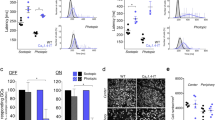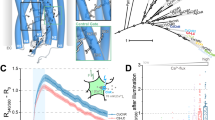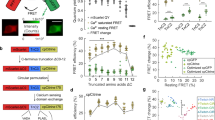Abstract
RECENT electrophysiological and morphological studies strongly suggest that the synaptic transmission between photoreceptors and horizontal cells in the vertebrate retina is chemical in nature, although the anatomical appearance of the neuronal contacts does not strictly conform to that of conventional chemical synapses1–3. It has been shown that changes in the ionic composition of the extracellular medium, such as lowering calcium, increasing magnesium or adding cobalt, that in the chemical synapses are known to block the release of transmitter4,5, abolish the response to light of horizontal cells without reducing that of photo-receptors6–8. The present report provides additional evidence that the synapses between photoreceptors and horizontal cells have properties characteristics of conventional chemical synapses. It is known that in the chemically transmitting synapse, strontium ions can substitute calcium ions in the process of transmitter release9–11. I have studied the effects of calcium–strontium substitution on the intracellularly recorded responses to light of horizontal cells and cones in the retina of the turtle (Pseudemys scripta elegans).
This is a preview of subscription content, access via your institution
Access options
Subscribe to this journal
Receive 51 print issues and online access
$199.00 per year
only $3.90 per issue
Buy this article
- Purchase on SpringerLink
- Instant access to full article PDF
Prices may be subject to local taxes which are calculated during checkout
Similar content being viewed by others
References
Lasansky, A., Phil. Trans. R. Soc., B262, 365–381 (1971).
Gray, E. G., and Pease, H. L., Brain Res., 35, 1–15 (1971).
Raviola, E., and Gilula, N. B., J. Cell Biol., 65, 192–222 (1975).
del Castillo, J., and Katz, D., Progr. Biophys. Biophys. Chem., 6, 121–170 (1956).
Weakly, J. N., J. Physiol., Lond., 234, 597–612 (1973).
Dowling, J. E., and Ripps, H., Nature, 242, 101–103 (1973).
Cervetto, L., and Piccolino, M., Science, 183, 417–419 (1974).
Kaneko, A., and Shimazaki, H., J. Physiol., Lond., 252, 509–522 (1975).
Miledi, R., Nature, 212, 1233–1234 (1966).
Dodge, F. A., Jr, Miledi, R., and Rahamimoff, R., J. Physiol. Lond., 200, 267–283 (1969).
Meiri, U., and Rahamimoff, R., J. Physiol., Lond., 215, 709–726 (1971).
Cervetto, L., and MacNichol, E. F., Jr., Science, 178, 767–768 (1972).
Heisey, S. R., Fedn Proc., 27, 287 (1968).
Baylor, D. A., and Fuortes, M. G. F., J. Physiol., Lond., 207, 77–92 (1970).
Byzov, A. L., and Trifonov, Yu. A., Vision Res., 8, 817–822 (1968).
Author information
Authors and Affiliations
Rights and permissions
About this article
Cite this article
PICCOLINO, M. Strontium–calcium substitution in synaptic transmission in turtle retina. Nature 261, 504–505 (1976). https://doi.org/10.1038/261504a0
Received:
Accepted:
Issue date:
DOI: https://doi.org/10.1038/261504a0



